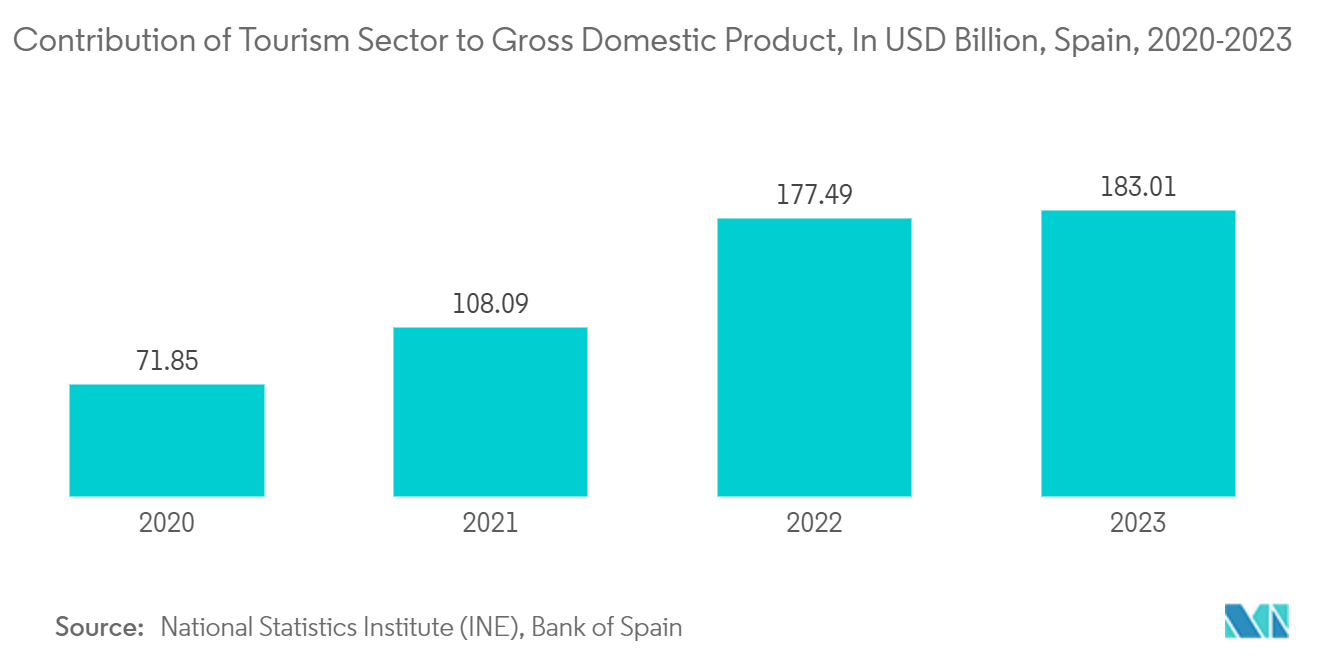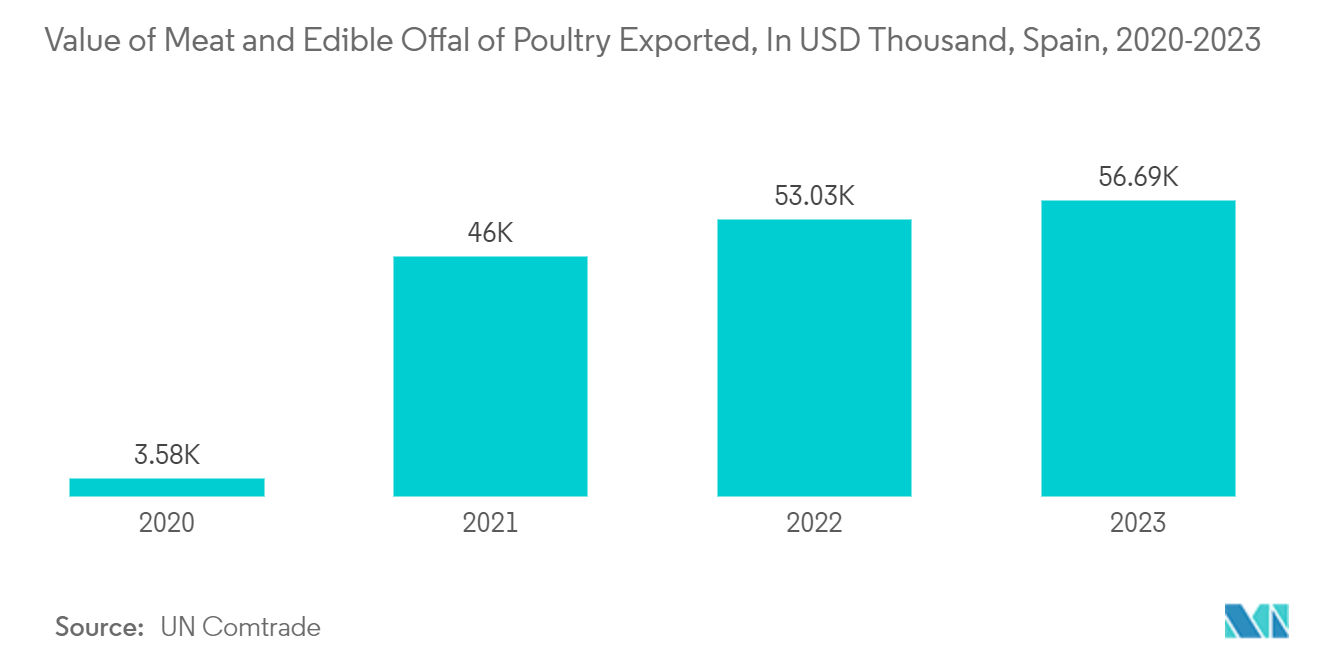Market Trends of Spain Flexible Plastic Packaging Industry
Rising Demand Owing to Tourism and Need for Convenient Packaging
- Flexible plastic packaging's lightweight, convenience, and cost-effectiveness have positioned it as the go-to option for perishables like dairy and meat, sustaining its popularity. Key drivers propelling the region's packaging industry growth encompass rising demands for compact, user-friendly packages, heightened emphasis on aesthetics, and a visually striking appeal.
- The robust growth of the tourism and e-commerce sectors is expected to open new opportunities for industry expansion. To reduce transportation costs, e-commerce companies prefer lightweight and flexible packaging solutions. The increasing popularity of online shopping for daily fresh foods and FMCG products is expected to drive industry growth.
- The robust growth of the tourism and e-commerce sectors is expected to open new opportunities for industry expansion. To reduce transportation costs, e-commerce companies prefer lightweight and flexible packaging solutions. The increasing popularity of online shopping for daily fresh foods and FMCG products is expected to drive industry growth.
- According to the National Statistics Institute (INE) and the Bank of Spain, the tourism sector's contribution to gross domestic products was EUR 64.57 (USD 71.84) billion in 2020, and it reached EUR 164.45 (USD 182.98) billion in 2023. The country's tourism accounts for 11.7% of its GDP. Therefore, increased tourism would leverage flexible plastic packaging, which is convenient and easy for on-the-go consumption.
- Consumer brand loyalty is a top concern for both food producers and retailers. The packaging of convenience food products serves as consumers' initial interaction, emphasizing the critical role of factors like quality, accessibility, ease of use, durability, and eco-friendly disposal. Consequently, the packaging and sealing sector remains in a perpetual state of innovation, catering to supermarkets, food processors, and various outlets to help them meet their business objectives.

End-user Industries, Such as Food, to Push Market Demand
- Spain is one of the leading European countries in frozen vegetable production and stands out as one of the European Union's primary agricultural hubs. Its agricultural prowess extends to diverse offerings, including fruits, vegetables, cereals, olives, grapes, citrus fruits, and almonds.
- Moreover, as Spain witnesses rapid industrialization and urbanization, its consumers increasingly gravitate toward the convenience of packaged food, such as frozen foods. This shift is bolstered by rising purchasing power and a growing appetite for premium food items. Given these dynamics, the Spanish market presents significant growth avenues for flexible plastic packaging solutions.
- According to UN Comtrade, the value of meat and edible offal of poultry exported from Spain was EUR 322,156 (USD 358,4)thousand in 2022, reaching EUR 509,433 (USD 566,86) thousand in 2023. Spain ranks third in Europe for its fish and meat consumption, trailing only behind Portugal and Norway. According to the Seafood Council, 70% of Spaniards enjoy fish twice a week, with a striking 90% consuming it at least once a week. Conversely, data from Spain's Ministry of Agriculture highlights an average daily meat consumption of 1349 grams per capita.
- In Spain, consumption rates of staples such as bread, breakfast cereals, cheese, milk, yogurt, fish, seafood, and meat surpass averages. While these sectors are well-established, there is a noticeable shift among consumers toward healthier choices.
- The country's food packaging market is poised for significant growth in the upcoming years, propelled by a heightened health consciousness among its populace. More consumers prioritize their health, resulting in a surge in fresh food purchases. Consequently, the demand for flexible plastic packaging grew in the food sector.


